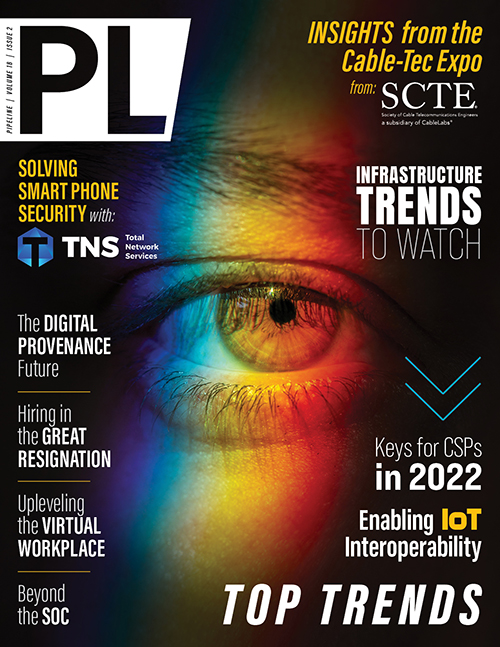The Technology Roadmap
to Enable IoT-Data Conversations
Advances in semantic interoperability
Existing technical specifications in the oneM2M standard contain the basic functionality for semantic interoperability. An application developer can invoke this as a service to allow an application to discover, connect and collect time-series data from an IoT sensor.
oneM2M’s current discovery capabilities work properly only if the discovery is well-scoped and designed (for example, an attribute field indicates that a set of lights are in a house) or if a search is related to specific known sources of information (for instance, searching for the values of a known set of application data records). When oneM2M is used to discover wider sets of data or unknown sets of data, the functionality is typically integrated by ad hoc applications to expand the oneM2M functionality. This is not optimal for interworking and interoperability when this core function is implemented in assorted flavors.
One way to improve matters involves a more dynamic approach to semantic interoperability. This is the topic of an ongoing project in European standards organization ETSI. It aims to enable an easy and efficient discovery of information and a proper interworking with external sources and consumers of information. This might apply to discovery in a distributed data base belonging to a smart city or an intelligent factory. It might also involve a direct search for information in the oneM2M system for big data purposes.
Returning to the cocktail party scenario, the new capabilities correspond to a person having the ability to find new people, who share similar interests, and to have a meaningful conversation over a common topic. Enhancements identified through the ETSI project will be introduced as new functionalities in Release 5 of the oneM2M standard.
Future trends and the residual value legacy systems
In the context of IoT systems, interoperability makes it possible to build applications that work across domains. The same principle makes it possible to develop applications using components that are supplied by different vendors. Data and system interoperability will become increasingly important in IoT systems as greater quantities of data are generated and shared across users and IoT platforms. Semantic interoperability enables new commercial opportunities in different domains such as healthcare, smart grid, smart metering, intelligent transport systems, industrial automation systems, and smart cities. Each of these examples relies on the collection, processing and sharing of data across organizational and operational boundaries.
A current work item in oneM2M on information models for the rail sector illustrates these ideas in a real-world setting. Consider a safety-related use case to alert train drivers in emergency situations based on capturing data from various kinds of railroad crossing gates along a railway line.
Another kind of gate and use case concerns ticketing and flow-control systems based on smart gates in train stations. In this case, some of the attributes in the gate’s information model deal with the open or closed status of a gate as well as data related to barcode and e-ticket scanning. Other attributes might deal with passenger instructions that might be sent to digital displays in the electronic gates. oneM2M defines a device template that provides a standardized way for developers to interact with IoT devices. In addition to covering a basic set of attributes, the template has the flexibility to include other attributes.
To date, Release 3 of the oneM2M standard established a library of 84 model classes for home domain devices. Additions to Release 4 go beyond the home domain to other verticals with 119 module classes and 19 common device models spanning home, health, city, vehicular and railway domains, as well as two sub-device models. This library makes it possible to form direct links between smart home and retail or manufacturing domains, for example, thereby enabling new, cross-domain services.
In addition to the future-oriented roadmap to enable new IoT capabilities, the oneM2M standard also addresses applications that depend on legacy technologies. A case in point is OPC-UA, which is a widely used industrial automation protocol for switches and programmable logic controllers (PLCs). oneM2M members defined an Interworking Proxy Entity (IPE) that provides syntactic interoperability between OPC-UA and oneM2M domains. It lays the foundation to support interworking between the OPC-UA information model and the oneM2M information model.
Building on this foundation, developers can use oneM2M’s Semantic Reasoning capability to interact with legacy devices. This is an example of oneM2M adding a layer of value on top of OPC-UA's data exchange functionality. As IoT systems become more common, this example illustrates another long-term industry requirement to capture the value of legacy systems through new interoperability capabilities.



















